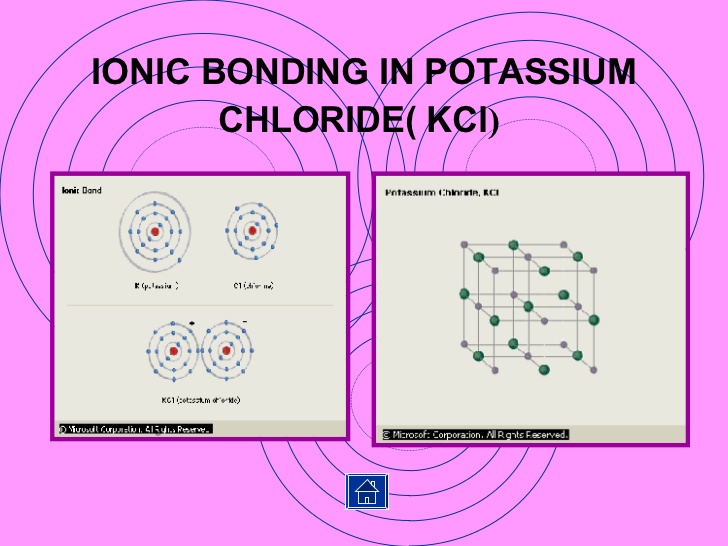Question #e25d5
1 Answer
Here's how you could do that.
Explanation:
Potassium chloride,
Potassium,
In order to complete its octet, a potassium atom must lose that valence electron. When that happens, the potassium cation,
Chlorine,
In order to complete its octet, a chlorine atom must gain
Now, when potassium reacts with chlorine, the former loses its valence electron and the latter takes it. The two resulting ions, i.e. the potassium cation and the chloride anion, are then bonded together by the electrostatic force of attraction

You can thus say that you have
#["K"^(+)] * ["Cl"^(-)] -> ["K"^(+)]["Cl"^(-)]#
The balanced chemical equation that describes this reaction looks like this
#2"K"_ ((s)) + "Cl"_ (2(g)) -> 2"KCl"_ ((s))#

